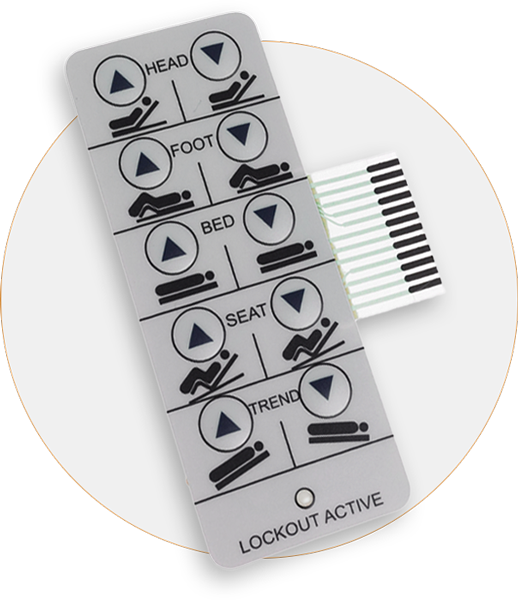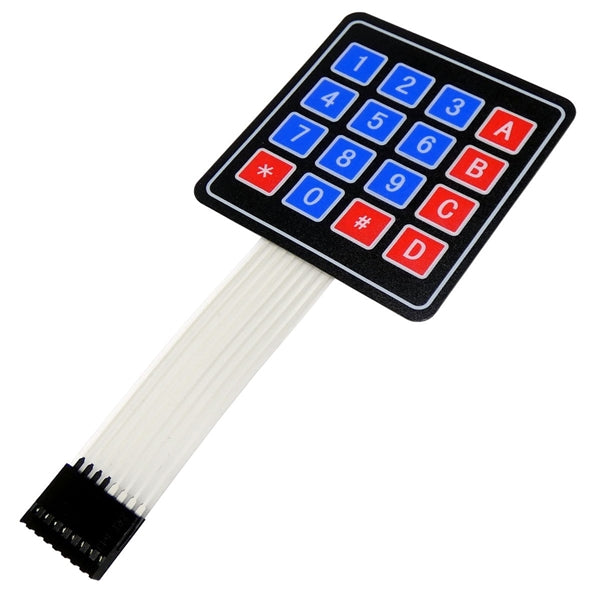Why Membrane Layer Switches Over Are Necessary for Sturdy Control Systems
Membrane buttons play an essential role in making sure the longevity and dependability of control systems across numerous markets. Their unique construction allows them to sustain tough ecological aspects such as moisture, temperature level extremes, and physical wear. This resilience not just prolongs the life expectancy of the systems they offer however likewise minimizes upkeep demands. As we check out the multifaceted benefits of membrane buttons, it ends up being obvious that their value transcends plain performance, affecting user experience and functional effectiveness. What further implications do these characteristics hold for the future of control system design?
Overview of Membrane Layer Switches
Membrane layer buttons are functional and trustworthy components typically utilized in numerous electronic control systems. These switches consist of a number of layers, including a graphic overlay, a spacer layer, and a printed circuit layer. The graphic overlay offers both functional and aesthetic design, while the spacer layer ensures that the buttons are triggered only when pushed. The published circuit layer consists of conductive traces that complete an electric circuit when the membrane is pressed, allowing the device to react to individual inputs.
Membrane layer buttons are frequently favored in applications requiring a compact and light-weight design, making them optimal for handheld tools, clinical equipment, and commercial equipment. They can be customized to satisfy certain individual demands and can integrate numerous attributes such as backlighting, responsive responses, and several shades. Membrane layer buttons are resistant to dirt, wetness, and pollutants, making them ideal for atmospheres where longevity is necessary.
Benefits of Sturdiness
In numerous applications, the resilience of membrane layer changes offers considerable benefits that enhance their total performance and reliability. These buttons are developed to stand up to severe environments, making them suitable for use sought after conditions such as high moisture, severe temperatures, and exposure to chemicals. Their durable construction assists to stop damage from physical influence, guaranteeing long-lasting performance and reducing the need for frequent substitutes.
Furthermore, membrane layer buttons are resistant to deterioration, which is crucial in applications where constant interaction occurs. This sturdiness equates to decrease maintenance prices, as companies gain from reduced downtime and fewer service interruptions. In addition, the encapsulated style of membrane layer changes secures interior elements from dust and moisture access, more adding to their life-span.
An additional benefit is their capability to preserve consistent efficiency over time. With a high tolerance for mechanical stress and anxiety, these buttons preserve their responsive comments and electric integrity, making certain individual complete satisfaction. Ultimately, the durability of membrane layer switches not just enhances functional performance however likewise fosters self-confidence in their dependability, making them a recommended choice for control systems across various markets.
Applications in Various Industries
Resilient control systems utilizing membrane layer buttons discover comprehensive applications across a variety of sectors, each gaining from the unique features these buttons offer. In the clinical field, membrane layer buttons are critical for tools such as client monitors and analysis equipment, where reliability and simplicity of cleansing are paramount. Their resistance to wetness and contaminants ensures they preserve capability in sterilized settings.
The auto market leverages membrane layer buttons for control panel controls and infomercial systems, where they give streamlined, low-profile user interfaces that improve individual experience. These switches are additionally created to withstand extreme problems, consisting of exposure to extreme temperature levels and resonances.
In commercial settings, membrane buttons are frequently used in equipment control panels, providing tactile responses and toughness needed for high-usage applications. Their capability to stand up to chemicals makes them suitable for manufacturing environments where spills and impurities are regular.

Consumer electronic devices, such as kitchen home appliances and push-button controls, also use membrane layer buttons for their adaptability and cost-effectiveness. On the whole, the adaptability and durable nature of membrane layer switches over make them vital throughout various markets, ensuring efficient procedure and durability in control systems.
Style and Visual Charm
While functionality is extremely important, the style and aesthetic appeal of control systems geared up with membrane layer buttons play a vital function in individual engagement and general experience (membrane switch). The visual style of these switches can significantly affect customer assumption and interaction. A properly designed membrane layer switch boosts the beauty of the gadget, making it extra appealing to users and cultivating a link in between the customer and the item
Membrane layer changes supply a lot of flexibility in style, allowing manufacturers to customize graphics, shades, and structures to straighten with brand name identification and item aesthetic appeals. Making use of dynamic colors and distinctive patterns can attract attention, while tactile feedback can reinforce the user's interaction with the device. In addition, the capacity to incorporate LED signs and backlighting into the membrane layer switch design gives both practical and aesthetic advantages, boosting exposure and usability in numerous environments.

Enhancing Customer Experience

Furthermore, membrane layer buttons can be customized to include visual user interfaces, boosting functionality by providing info in a clear and intuitive fashion (membrane switch). This modification can consist of icons, tags, and color coding that overview customers via complex performances effortlessly. In addition, their adaptability enables for combination in different atmospheres, making sure regular performance whether in industrial equipment or consumer electronic devices
The toughness of membrane switches likewise plays a critical function in individual experience. By holding up against extreme conditions and expanded usage, these switches decrease the chance Visit Website of system failings, hence advertising dependability and user self-confidence. Inevitably, the calculated use membrane switches not just raises functionality yet also considerably enhances customer communication with control systems, making them an important part in modern-day design.
Final Thought
